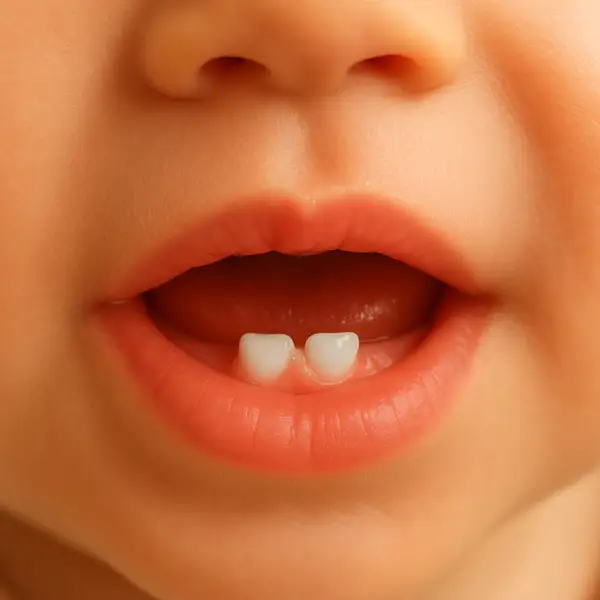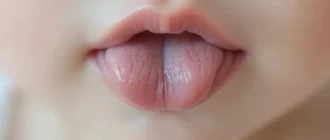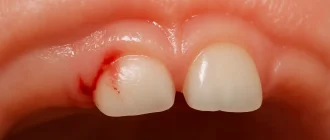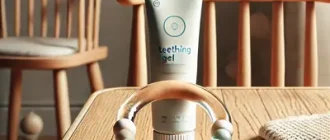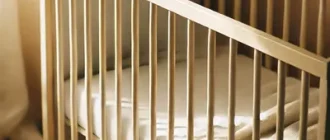Baby teeth eruption charts act like gentle guides for parents, showing when each tiny tooth will appear and how a child’s smile gradually takes shape. They work much like growth trackers for height or weight, helping families follow natural milestones without worry. Many parents even use a visual kids teeth reference to see these changes more clearly as their baby grows.
Since every child develops at a slightly different pace, kids teeth with an easy-to-read chart help parents understand what’s normal and what might take a little longer. It’s like having a travel map — you know the route, expect a few detours, but still feel confident you’ll reach the destination. These visuals make the process of teething less confusing and far more predictable.
When exploring baby teeth eruption patterns, some parents notice possible deviations from usual timing, such as a tooth that arrives late or several erupting together. It’s similar to how flowers bloom — some appear early, others wait, but all eventually fill the garden. Understanding these natural differences helps parents stay calm and informed as their child’s dental journey unfolds.
Most infants develop these first; lower ones usually appear before upper ones.
Moderate variation; upper lateral incisors often appear slightly later.
Commonly delayed by a few months without clinical concern.
Highly variable stage; eruption often overlaps with molars.
Widest variability; many children get them closer to 30–36 months.
Baby Teeth Eruption Chart
Baby teeth, also called primary or deciduous teeth, begin erupting around six months of age and are usually fully developed by age three.
| Tooth Type | Eruption (Months) | Shedding (Years) |
|---|---|---|
| Central Incisors | 6-12 | 6-7 |
| Lateral Incisors | 9-16 | 7-8 |
| Canines (Cuspids) | 16-23 | 9-12 |
| First Molars | 13-19 | 9-11 |
| Second Molars | 23-33 | 10-12 |
Signs of Teething
- Increased drooling – Babies may constantly have a wet chin, which can lead to mild skin irritation around the mouth and cheeks. This happens because their salivary glands are more active to help soothe irritated gums.
- Irritability and fussiness – Due to the discomfort of emerging teeth, babies may cry more often, refuse to eat, or have sudden mood swings.
- Biting and chewing on objects – Babies instinctively try to relieve gum pain by gnawing on anything they can grab, such as toys, fingers, or even household items.
- Swollen gums – The gums may appear red, inflamed, and slightly puffy, especially where a tooth is about to break through. Some parents notice a small white bump before the tooth emerges.
- Sleep disturbances – The discomfort of teething can disrupt a baby’s sleep pattern, causing frequent night awakenings and difficulty settling down.
Percentage of Children Experiencing Teething Symptoms
| Teething Symptom | Percentage (%) |
|---|---|
| Increased Drooling | 85% |
| Irritability | 75% |
| Biting & Chewing | 80% |
| Swollen Gums | 65% |
| Sleep Disturbances | 60% |
This chart highlights the percentage of children experiencing common teething symptoms. Increased drooling and biting are the most frequently observed symptoms.
Permanent Teeth Eruption Chart
Around age six, baby teeth begin to fall out, making room for permanent teeth.
| Tooth Type | Eruption (Years) |
|---|---|
| Central Incisors | 6-8 |
| Lateral Incisors | 7-9 |
| Canines (Cuspids) | 9-12 |
| First Premolars | 10-12 |
| Second Premolars | 10-12 |
| First Molars | 6-7 |
| Second Molars | 11-13 |
| Third Molars (Wisdom Teeth) | 17-25 |
Importance of Baby Teeth
Even though baby teeth eventually fall out, they play a crucial role in speech development, proper chewing, and guiding permanent teeth into place. Early loss of baby teeth can lead to misalignment issues.
Common Dental Issues in Kids
- Tooth Decay (Cavities) – Caused by sugary foods and poor oral hygiene.
- Delayed Tooth Eruption – Could be due to genetics, malnutrition, or underlying health conditions.
- Crowding or Misalignment – May require orthodontic evaluation.
- Thumb Sucking & Pacifier Use – Can affect tooth alignment if continued past age three.
Case Studies: Real-Life Pediatric Dental Issues
Case 1: Severe Tooth Decay in a 4-Year-Old (California)
A mother noticed dark spots on her 4-year-old son’s upper front teeth. The child frequently consumed sugary drinks and rarely brushed his teeth properly. A pediatric dentist diagnosed severe early childhood caries and performed fluoride treatment along with cavity fillings. The parents implemented a strict brushing routine and reduced sugary snacks, leading to improved oral health.
Sugar Consumption and Risk of Cavities in Kids
| Sugar Intake Level | Risk of Cavities (%) |
|---|---|
| Low Sugar Intake | 10% |
| Moderate Sugar Intake | 30% |
| High Sugar Intake | 60% |
This chart illustrates the correlation between sugar consumption and the risk of cavities in children. Higher sugar intake significantly increases the likelihood of developing cavities.
Case 2: Delayed Tooth Eruption in a 7-Year-Old (Texas)
A father brought his 7-year-old daughter to a dentist concerned that her lower central incisors had not yet erupted. After X-rays, the dentist determined that the permanent teeth were developing but delayed due to a genetic factor. The child’s teeth erupted naturally within a year, and no further intervention was needed.
Case 3: Thumb Sucking Habit Causing Misalignment (New York)
A 5-year-old girl had a persistent thumb-sucking habit, which began affecting her front teeth alignment. The dentist recommended a habit-breaking appliance, and her parents introduced positive reinforcement techniques. Within six months, she successfully stopped thumb sucking, preventing the need for early orthodontic treatment.
Case 4: Crowding in an 8-Year-Old (Florida)
An 8-year-old boy experienced severe crowding of his lower teeth, making brushing difficult and leading to early signs of gingivitis. His dentist suggested an early orthodontic consultation, and a phased treatment plan was initiated, including a space maintainer. This early intervention prevented more extensive orthodontic work in his teenage years.
How to Maintain Healthy Teeth
- Brush twice a day with fluoride toothpaste, using a soft-bristled toothbrush suited for their age. Ensure brushing lasts at least two minutes, covering all surfaces of the teeth and gums.
- Floss daily once two teeth touch, making sure to gently slide the floss between teeth without snapping it. This helps remove plaque buildup that a toothbrush cannot reach.
- Limit sugary snacks and drinks, including fruit juices and sticky candies that can linger on teeth. Opt for healthier alternatives like fresh fruits, vegetables, and dairy products.
- Schedule regular dental checkups every six months to monitor tooth development, detect cavities early, and receive professional cleanings. If necessary, ask the dentist about fluoride treatments or dental sealants for additional protection.
Editorial Advice
Reyus Mammadli, healthcare advisor, recommends parents start dental visits by their child’s first birthday to prevent early cavities and ensure proper tooth development. Teaching kids good oral hygiene habits from an early age can prevent costly dental treatments later.
Understanding the kid teeth chart helps parents stay ahead of their child’s dental milestones and address concerns promptly. Healthy teeth lead to a healthy smile!
